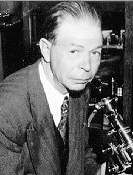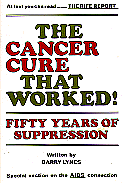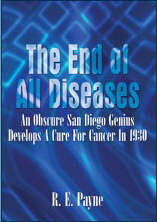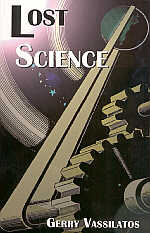
A Quick Primer On 'Rife'
it helps to know a little bit about the work of
Royal Raymond Rife
![]() A discussion of Emag+
would be incomplete without a discussion of the pioneering work of
Royal R. Rife -- since both Rife's beam ray machine and Emag+
are plasma frequency devices, and both employ (in Rife's case
'employed') frequencies in the same lower hertz range.
A discussion of Emag+
would be incomplete without a discussion of the pioneering work of
Royal R. Rife -- since both Rife's beam ray machine and Emag+
are plasma frequency devices, and both employ (in Rife's case
'employed') frequencies in the same lower hertz range.
![]() In the 1920's Royal Raymond Rife
observed under his microscope that bacteria, viruses and diseases could be
affected while radiating them with frequencies from a plasma tube antenna.
In the 1920's Royal Raymond Rife
observed under his microscope that bacteria, viruses and diseases could be
affected while radiating them with frequencies from a plasma tube antenna.
![]() The research
setup he used to make these observations has not been preserved
and therefore his observations are being rediscovered and advanced by
many researchers worldwide. The right column of this page lists books
that will give you an in-depth look at Rife -- the man, and his work,
but for the ease of our users, we provide a quick summary below.
The research
setup he used to make these observations has not been preserved
and therefore his observations are being rediscovered and advanced by
many researchers worldwide. The right column of this page lists books
that will give you an in-depth look at Rife -- the man, and his work,
but for the ease of our users, we provide a quick summary below.

![]() Royal Raymond Rife
was born in 1988 in Elkton, Nebraska. In 1913, he travelled
to San Diego, California with his wife from New York -- a place
that would set the stage for the Rife tragedy.
Royal Raymond Rife
was born in 1988 in Elkton, Nebraska. In 1913, he travelled
to San Diego, California with his wife from New York -- a place
that would set the stage for the Rife tragedy.
![]() Very early on, Rife showed
a tremendous interest in microscopy. His unique talent would
take him to build his first unit in 1920 -- then lead him to
create his crowning achievement in that field in the 1933:
the Universal Microscope. To this date, no
microscope, not even advanced electron microscopes, can
magnify objects to the power of Rife's (resolution to
31,000 X and magnification of 60,000 X) while allowing
the operator to view the smallest living microbes -- viruses.
Very early on, Rife showed
a tremendous interest in microscopy. His unique talent would
take him to build his first unit in 1920 -- then lead him to
create his crowning achievement in that field in the 1933:
the Universal Microscope. To this date, no
microscope, not even advanced electron microscopes, can
magnify objects to the power of Rife's (resolution to
31,000 X and magnification of 60,000 X) while allowing
the operator to view the smallest living microbes -- viruses.
![]() Rife then created
cultures of microbes, and from 1920 to 1925, he sectioned,
stained, and tested some 20,000 pathological tissues --
looking for ways to destroy the organisms through the
transmission of electromagnetic frequencies.
Rife perfected his microscope to the point where he
was able to identify and classify pathogenic micro-organisms
according to their M.O.R. (Mortal Oscillatory Rate) -- the
precise frequency that "blew them up."
Rife then created
cultures of microbes, and from 1920 to 1925, he sectioned,
stained, and tested some 20,000 pathological tissues --
looking for ways to destroy the organisms through the
transmission of electromagnetic frequencies.
Rife perfected his microscope to the point where he
was able to identify and classify pathogenic micro-organisms
according to their M.O.R. (Mortal Oscillatory Rate) -- the
precise frequency that "blew them up."
![]() In 1932 Rife observed
a virus from a breast cancer tissue sample and was able to
discover the following: that cancer was directly caused
by what he called the "BX cancer virus" -- an organism
just 1/15 micron in length and 1/20 micron in breath.
Secondly, that this cancer micro-organism had four forms
(i.e. was 'pleomorphic'), further reinforcing the theories
of 19th century biologist, Antoine Beauchamp -- and that,
furthermore, it could be destroyed in vitro or in vivo
when attacked in proximity to the correct lower hertz frequency
at a refraction angle of 12.1875 degrees, using
a plasma generating argon-filled tube energized
with 5,000 volts.
In 1932 Rife observed
a virus from a breast cancer tissue sample and was able to
discover the following: that cancer was directly caused
by what he called the "BX cancer virus" -- an organism
just 1/15 micron in length and 1/20 micron in breath.
Secondly, that this cancer micro-organism had four forms
(i.e. was 'pleomorphic'), further reinforcing the theories
of 19th century biologist, Antoine Beauchamp -- and that,
furthermore, it could be destroyed in vitro or in vivo
when attacked in proximity to the correct lower hertz frequency
at a refraction angle of 12.1875 degrees, using
a plasma generating argon-filled tube energized
with 5,000 volts.
![]() Rife went on to
observe this pleomorphic metamorphosis
over 300 times with identical and positive results.
This repeated success lead to the creation of a structured
clinical test in 1934 in cooperation with the Hooper
Foundation in California. In that test, sixteen
advanced cancer cases were treated using Rife's
Frequency Instrument (later to be called Ray Beam).
Every single patient recovered with complete remission.
Rife went on to
observe this pleomorphic metamorphosis
over 300 times with identical and positive results.
This repeated success lead to the creation of a structured
clinical test in 1934 in cooperation with the Hooper
Foundation in California. In that test, sixteen
advanced cancer cases were treated using Rife's
Frequency Instrument (later to be called Ray Beam).
Every single patient recovered with complete remission.
![]() The success of Rife's
work eventually caught the attention of Morris Fishbein,
president of the American Medical Association -- an
enterprising medical doctor who never actually practiced
medicine. Through intermediaries Fishbein vigorously sought
to "buy up" Rife's company, his patent work -- thus
owning technology. Rife and his associates refused.
The success of Rife's
work eventually caught the attention of Morris Fishbein,
president of the American Medical Association -- an
enterprising medical doctor who never actually practiced
medicine. Through intermediaries Fishbein vigorously sought
to "buy up" Rife's company, his patent work -- thus
owning technology. Rife and his associates refused.
![]() Rife was subpoened
in May, 1939 in a lawsuit filed by the AMA against Rife
and his company, Beam Ray. It was the beginning of a long
campaign by powerful, monied medical interests to make
sure that Rife's technology would be permanently suppressed.
Given its outrageousness, the AMA eventually lost its
case. (The judge in the case, Edward Kelly, even agreed
afterwards to help the defendants sue the AMA -- but by
then Rife and his associates were all broke).
Rife was subpoened
in May, 1939 in a lawsuit filed by the AMA against Rife
and his company, Beam Ray. It was the beginning of a long
campaign by powerful, monied medical interests to make
sure that Rife's technology would be permanently suppressed.
Given its outrageousness, the AMA eventually lost its
case. (The judge in the case, Edward Kelly, even agreed
afterwards to help the defendants sue the AMA -- but by
then Rife and his associates were all broke).
![]() Through repeated
harassment and targeting, Rife and all his associates
met their demise. Ben Cullen, who funded Beam Ray,
lost his home and ended up dying a broken man.
Dr. Milbank Johnson compiled Rife's work and was
reported to be preparing an announcement on the
"Cure for Cancer." He fell suddenly ill and died
shortly after being admitted to a hospital in 1944.
Federal inspectors in the late 1950's - early 1960's
concluded that Dr. Johnson was most probably poisoned.
Dr. Arthur Kendall, the wealthy, famous pathologist,
whose "K Medium" was essential to Rife's discovery,
died penniless, supported only by his son-in-law,
in 1959. Rife and his understudy, John Crane, were both
imprisoned. Rife's laboratory conveniently burned
to the ground -- and Rife's equipment and microscopes
were all confiscated, vandalized, or stolen.
Many doctors who continued to press in
favor of Rife's work lost their license to practice
medicine. (It is all thoroughly documented.)
Through repeated
harassment and targeting, Rife and all his associates
met their demise. Ben Cullen, who funded Beam Ray,
lost his home and ended up dying a broken man.
Dr. Milbank Johnson compiled Rife's work and was
reported to be preparing an announcement on the
"Cure for Cancer." He fell suddenly ill and died
shortly after being admitted to a hospital in 1944.
Federal inspectors in the late 1950's - early 1960's
concluded that Dr. Johnson was most probably poisoned.
Dr. Arthur Kendall, the wealthy, famous pathologist,
whose "K Medium" was essential to Rife's discovery,
died penniless, supported only by his son-in-law,
in 1959. Rife and his understudy, John Crane, were both
imprisoned. Rife's laboratory conveniently burned
to the ground -- and Rife's equipment and microscopes
were all confiscated, vandalized, or stolen.
Many doctors who continued to press in
favor of Rife's work lost their license to practice
medicine. (It is all thoroughly documented.)
![]() Rife himself,
a gentle soul, quiet researcher, and meticulous
keeper of lab notes, became an alcoholic and
died homeless and penniless in 1971 at the
age of 83.
Rife himself,
a gentle soul, quiet researcher, and meticulous
keeper of lab notes, became an alcoholic and
died homeless and penniless in 1971 at the
age of 83.
![]() Though
the Rife's story, as told in the thousands of
surviving documents that have since been amassed,
sounds like the stuff of urban legend, but
it most decidedly is not.
[ You should understand
the reasons why.]
Though
the Rife's story, as told in the thousands of
surviving documents that have since been amassed,
sounds like the stuff of urban legend, but
it most decidedly is not.
[ You should understand
the reasons why.]
- Dr, Royal Rife -- www.rife.org, a review of his work history through extensively compiled literature, including newspaper and magazine articles, lab reports, research papers, related patents, and the 1939 trial papers.
- The End of
All Diseases -- About R.E. Payne's book concerning Rife.
- Medical Truth: Royal Raymond Rife -- We feel our analysis of government and industry corruption in suppressing cancer therapies is better written, but this piece is still insightful and a good read. It originally appeared on rense.com, and is quoted elsewhere.
- Dangerous Genius: The Story of Royal R. Rife -- As if Barry Lynes didn't make enough of a contribution with his book, here's the web page.
- Rife Links -- Some of interest, some just slightly tangential, and others just selling wears. Pick and choose carefully.
- Royal Raymond Rife, Humanitarian, Betrayed & Persecuted by Fred Farly. Poorly written and not well-documented. We list it here as not something to pursue but to avoid.
![]() A number of excellent books
have been published about the Rife's work, which we summarize
below:
A number of excellent books
have been published about the Rife's work, which we summarize
below:



